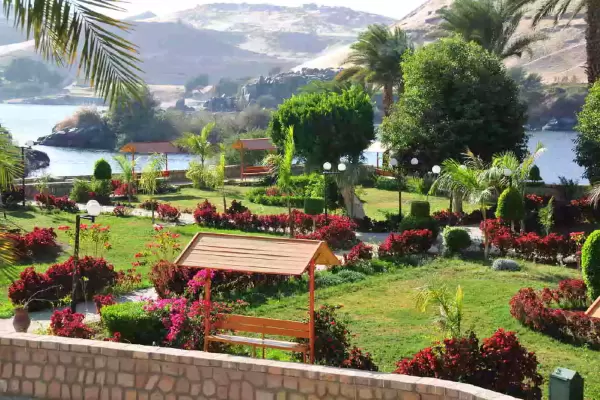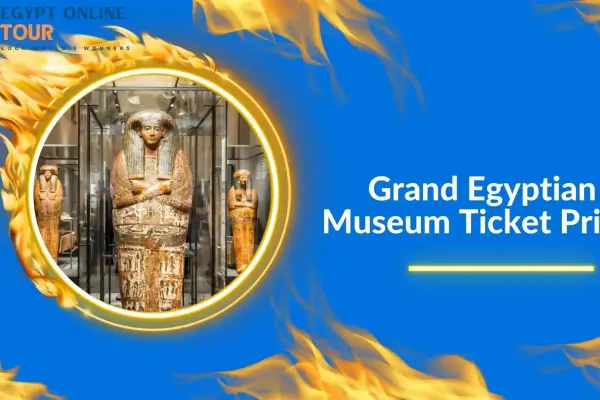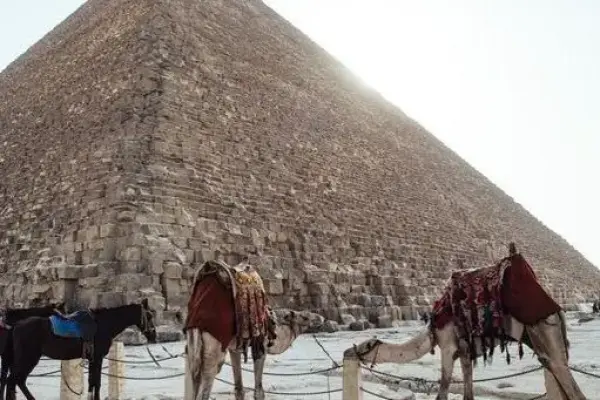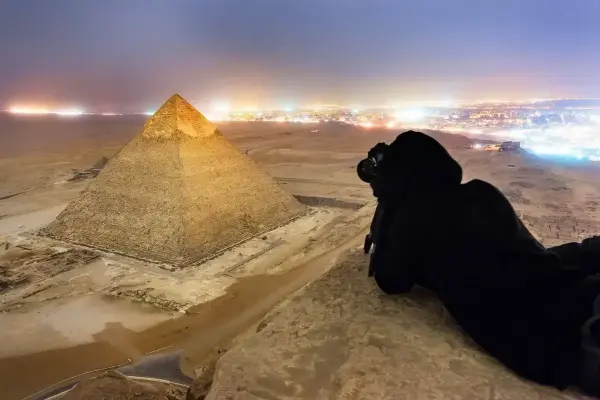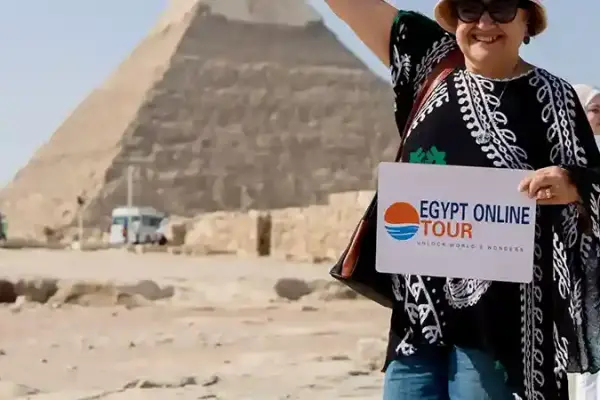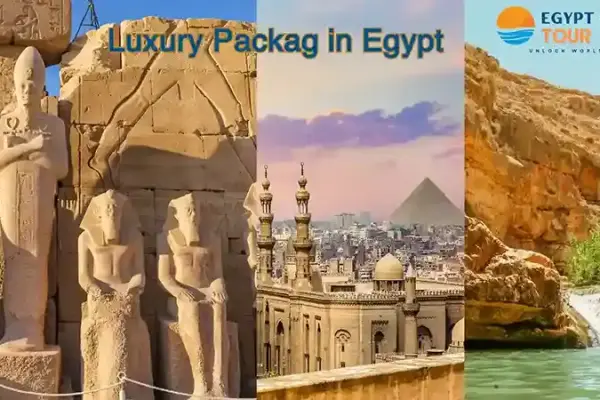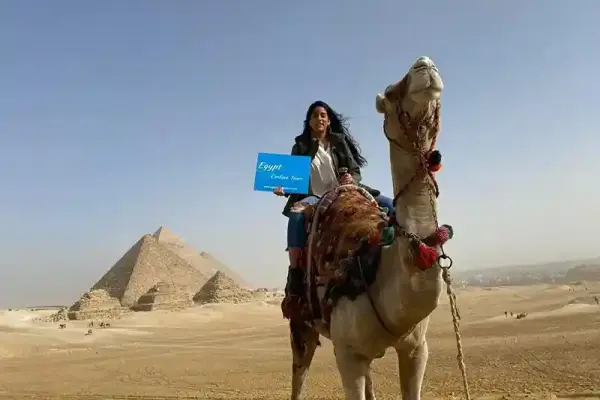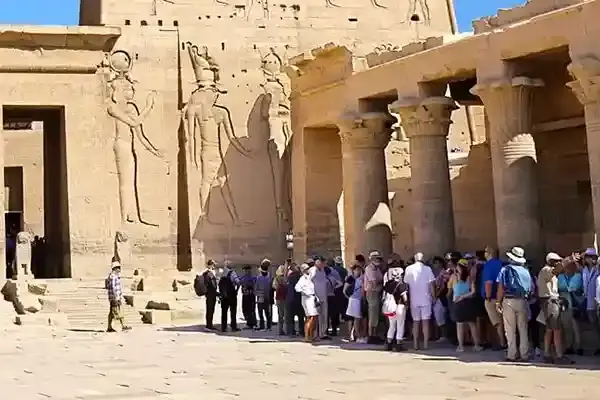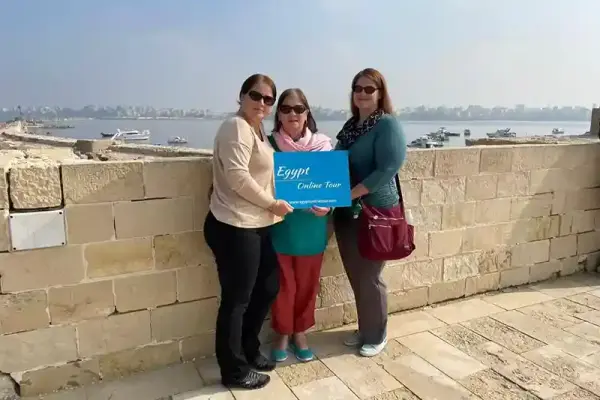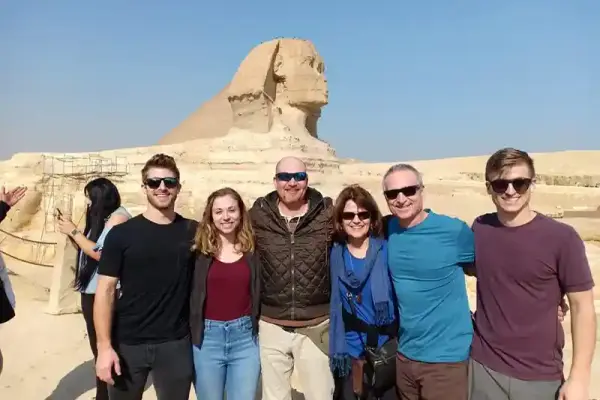The Middle Kingdom of Egypt (2050-1710 BCE) stands as one of the most remarkable periods in ancient Egyptian history, often referred to as the Golden Age. Did you know Why Was The Middle Kingdom a Golden Age for Egypt? This era witnessed the construction of over 200 small pyramids and the global recognition of Egyptian literature through works like The Tale of Sinuhe.
According to renowned Egyptologist James Henry Breasted, the Middle Kingdom represents "a time when the Egyptian state attained its highest perfection, blending political power with cultural achievement."
Let’s dive into why this period was such a transformative and unforgettable chapter in Egypt’s past.
Table of contents [Show]
- What was the Middle Kingdom of Egypt known for?: The Golden Age of Egypt
- Egypt Middle Kingdom History: The Middle Kingdom of Egypt
- Achievements of the Middle Kingdom of Egypt
- Egypt Middle Kingdom Pyramids
- Who Were the Major Pharaohs of Egypt's Middle Kingdom?
- What Occurred During the Middle Kingdom?: Most Specific Events
- Which Kingdom Is Considered to Be Egypt's Golden Age?
- Why Was The Middle Kingdom A Golden Age For Egypt : 7 Amazing Facts
- Why Was Egypt Called the Golden Age?
- Why Was the Middle Kingdom Period So Great?
- Which Group Invaded Egypt During the Middle Kingdom?
- The End of Egypt Middle Kingdom
What was the Middle Kingdom of Egypt known for?: The Golden Age of Egypt
The Middle Kingdom was distinguished by its remarkable governance, art, and literature advancements. Known for its innovative administrative reforms, the period saw the establishment of a more equitable taxation system and improved provincial governance. Egyptian literature reached new heights, with masterpieces such as The Tale of Sinuhe and The Instructions of Amenemhat reflecting the philosophical and moral values of the time.
Egyptologist Barbara Watterson highlights the era’s significance, stating, speaking about Why Was The Middle Kingdom a Golden Age for Egypt saying "The Middle Kingdom stands out as a period of great intellectual and artistic expression, showcasing the maturity and depth of Egyptian civilization." Architecturally, this period introduced smaller yet more sophisticated pyramids, symbolizing a shift in focus from grandiose monuments to more practical and sustainable constructions.
The Middle Kingdom’s contributions to Egyptian culture and statecraft remain a defining legacy, earning it the title of a "golden age" that deeply influenced subsequent generations.
Egypt Middle Kingdom History: The Middle Kingdom of Egypt
The Middle Kingdom of Egypt (c. 2055–1650 BCE) is often considered a "golden age" due to its political stability, economic prosperity, cultural achievements, and expansion. It is the second major period in ancient Egyptian history, following the Old Kingdom and preceding the New Kingdom. Here's an overview of its history:
1. Timeline and Dynasties
The Middle Kingdom spans two main dynasties:
- 11th Dynasty (c. 2055–1985 BCE): Marked by the reunification of Egypt under Mentuhotep II.
- 12th Dynasty (c. 1985–1773 BCE): Characterized by centralized power, territorial expansion, and cultural revival.
2. Origins: Reunification of Egypt
The Middle Kingdom began when Mentuhotep II of the 11th Dynasty reunited Egypt after the chaos of the First Intermediate Period (c. 2181–2055 BCE). During this earlier period, Egypt was fragmented into competing regions with rival rulers.
3. Political Stability and Administration
The pharaohs re-established a strong central government.
The capital was moved to Itjtawy, near Fayoum, during the 12th Dynasty, allowing better control over Egypt's vast territory.
A sophisticated bureaucracy was developed, with positions often filled by middle-class individuals, enhancing efficiency.
4. Economic Prosperity
Large-scale irrigation projects, such as those in the Fayoum Oasis, increased agricultural productivity.
Trade networks expanded, linking Egypt with Nubia, the Levant, and Punt. These routes brought gold, ebony, incense, and other luxury goods to Egypt.
The construction of fortresses in Nubia secured trade routes and resources, including gold mines.
5. Cultural Achievements
Literature
- Middle Kingdom literature flourished, producing works like The Tale of Sinuhe, The Eloquent Peasant, and Instructions of Amenemhat.
- Writing emphasized moral values, personal piety, and reflections on leadership.
Art and Architecture
- Art became more realistic, depicting pharaohs and individuals with unique features rather than idealized forms.
- Major construction projects included pyramids, temples, and irrigation systems. Examples include the Mortuary Temple of Mentuhotep II and the Labyrinth at Hawara built by Amenemhat III.
6. Military Campaigns and Territorial Expansion
- Pharaohs like Senusret III conducted military campaigns into Nubia and the Sinai Peninsula.
- Defensive fortifications were built, especially along the southern borders, to protect Egypt and maintain control over trade routes.
7. Religious Developments
- The Coffin Texts, a collection of funerary spells, became widely used, reflecting a democratization of the afterlife.
- Amun was the real Theban deity and also rose to prominence and even foreshadowed his central role in the New Kingdom.
8. Decline and Transition
The Middle Kingdom ended during the 13th Dynasty, as Egypt fell into the Second Intermediate Period (c. 1650–1550 BCE):
Political instability arose due to weak rulers and challenges from local governors.
The rise of the Hyksos, a foreign dynasty that controlled northern Egypt, marked the beginning of this transitional period.
The Middle Kingdom set a precedent for strong centralized rule and cultural achievements that influenced later periods, particularly the New Kingdom. Its literature, architecture, and administrative reforms left a lasting mark on Egyptian civilization.
Achievements of the Middle Kingdom of Egypt
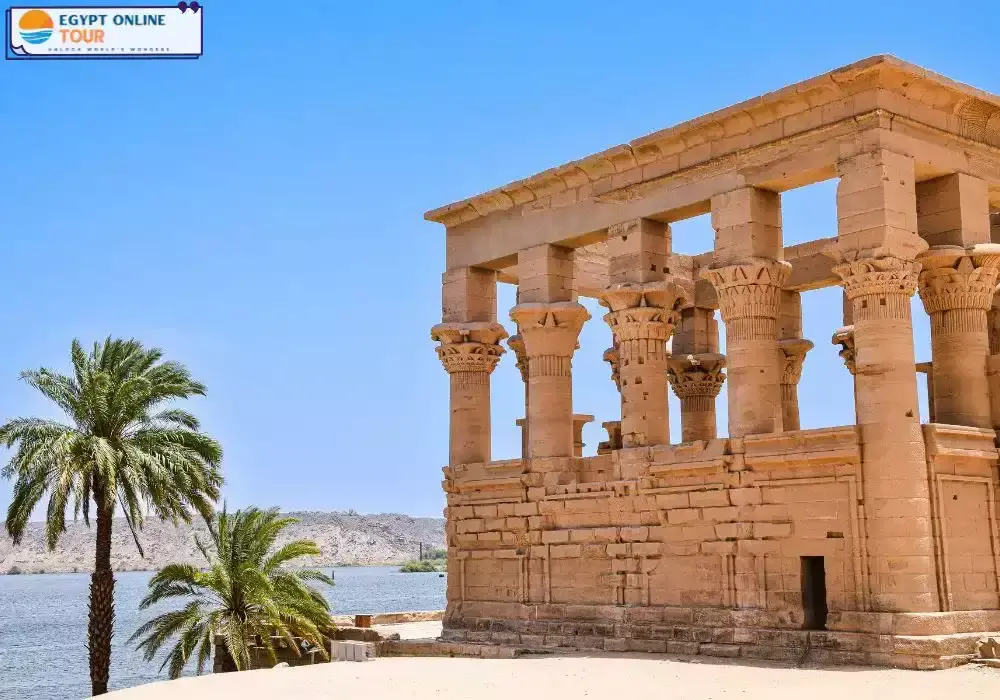
The Middle Kingdom was a golden age of economic, social, and political progress. Centralized governance strengthened Egypt’s economy through improved agriculture, irrigation projects, and expanded trade networks that reached as far as modern-day Syria and Nubia. Socially, this era saw a rise in the middle class and increased attention to workers' rights and well-being.
Prominent Egyptologist John A. Wilson described this period as "the age of balance and equilibrium, where power and prosperity were shared more broadly." Politically, pharaohs like Senusret III redefined leadership by focusing on administrative reforms and fortifying Egypt’s borders, ensuring lasting stability and growth.
Discover the achievements of the Middle Kingdom with just 5 Days Cairo to Luxor Tour Packages .
Egypt Middle Kingdom Pyramids
Architecture in the Middle Kingdom reflected innovation and practicality. While the pyramids of this era were smaller than those of the Old Kingdom, they displayed advanced construction techniques and resource efficiency. These structures, such as the Pyramid of Amenemhat III at Hawara, highlight the era's focus on sustainability and functionality.
As Egyptologist Mark Lehner notes, "The Middle Kingdom pyramids symbolized not only royal power but also the state's ability to adapt and innovate." These constructions marked a shift in priorities, focusing on creating durable monuments that blended with the cultural and economic ambitions of the time.
Who Were the Major Pharaohs of Egypt's Middle Kingdom?
The Middle Kingdom thrived under the leadership of remarkable pharaohs who shaped its golden age. Mentuhotep II, known as the "Unifier of Egypt," restored political stability and centralized power. Senusret I expanded Egypt's trade routes and reinforced its borders, while Senusret III is celebrated as one of the greatest rulers, known for his administrative reforms and military prowess.
The Middle Kingdom of Egypt (c. 2055–1650 BCE) was marked by the reigns of several significant pharaohs, primarily from the 11th and 12th Dynasties, who contributed to the reunification, stability, and prosperity of the kingdom. Here you are the most major pharaohs of the Middle Kingdom:
11th Dynasty (c. 2055–1985 BCE):
Mentuhotep II (c. 2061–2010 BCE)
- Known as the founder of the Middle Kingdom, he reunified Egypt after the chaos of the First Intermediate Period.
- Established Thebes as a political and religious center.
- Start large-scale construction projects, including his famous mortuary temple at Deir el-Bahri.
Mentuhotep III (c. 2010–1998 BCE)
- Continued to stabilize the kingdom and expand trade, particularly with Punt.
- He is known for his administrative reforms and infrastructure projects.
Mentuhotep IV (c. 1998–1991 BCE)
- His reign is less documented, but he is noted for organizing expeditions to gather valuable resources like stone and minerals.
- He was likely succeeded by his vizier, Amenemhat I, who founded the 12th Dynasty.
12th Dynasty (c. 1985–1773 BCE)
Amenemhat I (c. 1985–1956 BCE)
- Moved the capital to Itjtawy, near modern-day Fayoum.
- Strengthened Egypt’s borders and centralized administration.
- May have been assassinated, as suggested by literary works like The Instruction of Amenemhat.
Senusret I (c. 1956–1911 BCE)
- Expanded Egypt’s influence into Nubia and the Sinai Peninsula.
- Built extensively, including significant additions to the Temple of Amun at Karnak.
Amenemhat II (c. 1911–1877 BCE)
- Focused on economic prosperity and foreign trade, evidenced by records of trade expeditions and diplomatic contacts.
Senusret II (c. 1877–1870 BCE)
- Known for agricultural innovations, including irrigation projects in the Fayoum region.
- Focused on domestic development rather than military expansion.
Senusret III (c. 1870–1831 BCE)
- One of the most powerful Middle Kingdom pharaohs.
- Conducted military campaigns in Nubia and strengthened Egypt’s southern border with fortresses.
- Revered as a semi-divine figure in later periods.
Amenemhat III (c. 1831–1786 BCE)
- Oversaw a period of great prosperity and large-scale construction, including the construction of the "Labyrinth" at Hawara and extensive irrigation projects.
- His reign marked the height of the Middle Kingdom’s achievements.
Amenemhat IV (c. 1786–1777 BCE)
- Little is known, but his reign appears to have been peaceful, focusing on administration and trade.
Sobekneferu (c. 1777–1773 BCE)
- The first confirmed female pharaoh of Egypt.
- Her reign marked the end of the 12th Dynasty and the Middle Kingdom.
- After Sobekneferu's reign, Egypt transitioned into the Second Intermediate Period, a time of fragmentation and foreign rule by the Hyksos. However, the achievements of the Middle Kingdom laid the groundwork for future periods of Egyptian greatness.
Historian Toby Wilkinson describes Senusret III as "the archetype of a Middle Kingdom pharaoh—strong, visionary, and deeply involved in the lives of his people." These leaders collectively laid the groundwork for cultural and economic flourishing, cementing the Middle Kingdom’s legacy.
- There are colorful funerary paintings dating back to the Middle Kingdom, such as the painting of Amenemhat and his wife E within the Grand Egyptian Museum Tour . When you visit the museum, you will be able to explore these pieces and learn more about this important era in Egyptian history.
What Occurred During the Middle Kingdom?: Most Specific Events
The Middle Kingdom witnessed transformative events that defined Egypt’s prosperity. Centralized reforms improved resource distribution, while advances in literature, like The Tale of Sinuhe, enriched cultural life. Militarily, the construction of fortresses along the Nubian border ensured security and expanded influence.
As Egyptologist Barry Kemp states, "The Middle Kingdom was a time of calculated expansion, intellectual achievement, and social evolution." Additionally, religious practices evolved, making afterlife beliefs more accessible to commoners, and marking a cultural shift toward inclusivity and innovation.
Which Kingdom Is Considered to Be Egypt's Golden Age?
The Middle Kingdom i widely regarded as Egypt's golden age due to its unmatched balance of cultural, political, and economic achievements. Unlike the grandeur-focused Old Kingdom or the imperial ambitions of the New Kingdom, the Middle Kingdom excelled in creating a more inclusive and sustainable society.
As Egyptologist William Hayes noted, "The Middle Kingdom represents the maturity of Egyptian civilization, where art, literature, and governance reached their peak harmony." This era fostered prosperity for not just the elite but also the middle class, with reforms that ensured stability and social cohesion. Its legacy of innovation and equilibrium remains a cornerstone of Egypt’s history.
Watch the greatness of the Middle Kingdom and why is it A Golden Age within 8 Days Cairo, Luxor, Aswan Classic Tours .
Why Was The Middle Kingdom A Golden Age For Egypt : 7 Amazing Facts
Why Was The Middle Kingdom a Golden Age for Egypt? Extending roughly from 2040 to 1782 BC, it is viewed as a golden age due to the remarkable progress it achieved in various fields, including politics, culture, economics, and military prowess. This period followed the chaotic First Intermediate Period and was marked by a period of stability and prosperity under the leadership of the powerful pharaohs.
Political Stability and Unification: Reunification of Egypt
The Middle Kingdom began with the unification of Egypt by Mentuhotep II, who ended the fragmentation that characterized the preceding First Intermediate Period. His successful military campaigns against rival factions solidified his power and established Thebes as the capital, which became a significant political and religious center.
Strong Governance
The pharaohs of the Middle Kingdom implemented effective administrative reforms that strengthened central authority while allowing some degree of local governance. This balance helped maintain order and facilitated economic growth. The establishment of a strong central government protected citizens from external threats and internal strife, promoting a sense of security that was conducive to cultural development.
Economic Prosperity: Agricultural Advancements
Agriculture flourished during the Middle Kingdom, supported by extensive irrigation projects, particularly in the Faiyum region. These initiatives expanded arable land and improved agricultural output, which was crucial for feeding the growing population. The surplus produced allowed for trade and commerce to thrive.
Trade Expansion
The period also saw a significant increase in trade both within Egypt and with neighboring regions. Egyptian merchants engaged in long-distance trade, acquiring valuable goods such as spices, gold, and luxury items. This economic activity not only enriched the state but also facilitated cultural exchanges that further enhanced Egyptian society.
You may like to read more about Egyptian Goddesses Amathaunta Facts
Cultural Flourishing: Artistic and Literary Achievements
The Middle Kingdom is renowned for its contributions to art and literature. This era witnessed a renaissance in creative expression, with advancements in sculpture, painting, and literature becoming more accessible to the general populace. Notable literary works emerged during this time, reflecting both religious themes and societal values.
Architectural Innovations
Architecturally, the Middle Kingdom is marked by significant building projects, including temples and tombs that showcased advanced techniques and artistic styles. The construction of monumental structures like the White Chapel of Senusret I exemplifies the architectural achievements of this period.
Military Strength: Expansion of Territory
The Middle Kingdom pharaohs undertook military campaigns to expand Egypt's borders into Nubia and beyond. These expeditions not only secured resources but also established fortified outposts that enhanced Egypt's strategic position in the region.
The Middle Kingdom is considered a golden age for Egypt due to its political stability, economic prosperity driven by agriculture and trade, cultural flourishing with significant artistic and literary achievements, and military strength that expanded its influence. This era laid foundational aspects of Egyptian civilization that would resonate through subsequent periods.
- During a 10 Days Round Trip Nile Cruise and Pyramids , you will have the opportunity to explore many archaeological sites associated with the Middle Kingdom of Egypt, such as:
- The Beni Hassan Tombs, the Lisht site, which contains the remains of pyramids and tombs dating back to the 12th Dynasty, including the pyramid of King Amenemhat I and the pyramid of Senusret I.
- The Karnak Temple in Luxor, in addition to the Tombs of the Nobles, which contains tombs dating back to the Middle Kingdom, such as the tomb of Khnumhotep II, which is distinguished by its colorful inscriptions, as well as the Temple of Kom Ambul, for the gods Sobek and Horus.
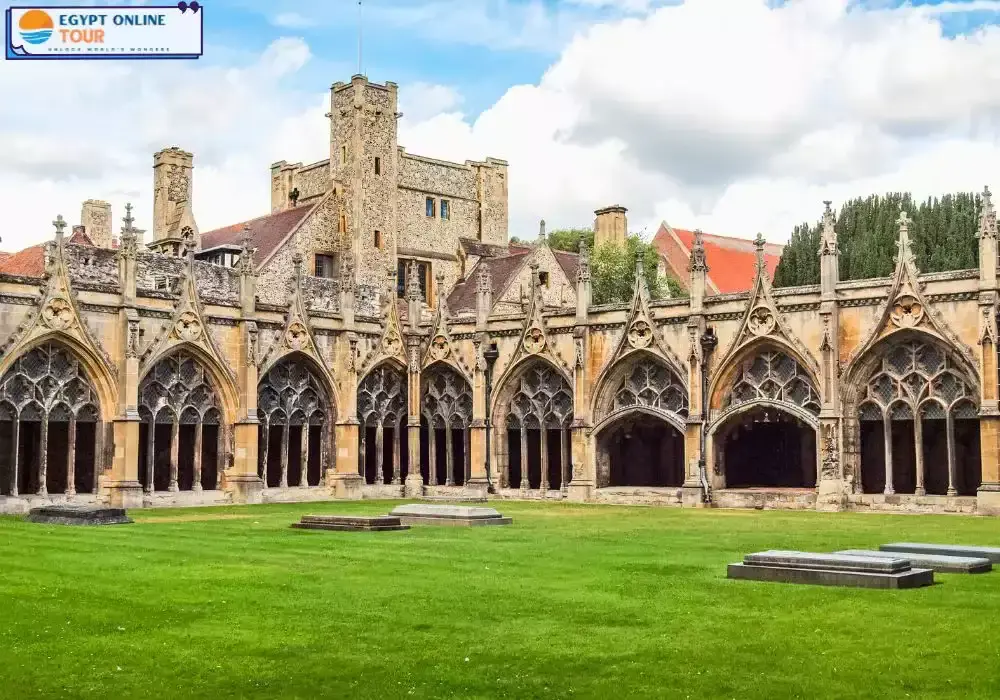
Why Was Egypt Called the Golden Age?
The term "golden age" reflects the Middle Kingdom’s unparalleled progress across all aspects of life. It was a time when art flourished, with intricate jewelry and sculptures, and literature advanced with works like The Instructions of Amenemhat. Politically, pharaohs emphasized justice and accountability, reshaping leadership ideals.
Historian Barbara Mertz stated, "The Middle Kingdom was golden because it bridged the aspirations of the common people and the rulers, creating a truly unified Egypt." This period’s ability to combine artistic brilliance, economic growth, and social inclusivity earned it the well-deserved title of a golden age.
Why Was the Middle Kingdom Period So Great?
The greatness of the Middle Kingdom lies in its visionary leaders, cultural achievements, and societal reforms. Pharaohs like Senusret III redefined governance with efficient administration and border fortifications, ensuring security and prosperity. The era also marked the democratization of religion, granting ordinary Egyptians access to the afterlife—a profound cultural shift.
Egyptologist Wolfram Grajetzki aptly noted, "The Middle Kingdom was a renaissance, where the state flourished not just in wealth, but in intellect and moral philosophy." This balance of innovation, stability, and inclusivity made the Middle Kingdom one of Egypt’s most impactful periods.
You may like to read more about Did Thoth Built The Pyramids
Which Group Invaded Egypt During the Middle Kingdom?
The Middle Kingdom faced its downfall partly due to the invasion of the Hyksos, a Semitic group that brought advanced weaponry, including horse-drawn chariots. The Hyksos initially settled peacefully but later capitalized on Egypt's internal divisions to seize power in the Delta region.
During the Middle Kingdom itself (c. 2055–1650 BCE), Egypt was largely stable and did not face major invasions. However, toward the end of the Middle Kingdom, foreign groups began to influence and eventually invade Egypt, contributing to the decline and transition into the Second Intermediate Period. The most notable group were the Hyksos. Here's an explanation:
The Hyksos
The Hyksos were a Semitic-speaking group, likely from the Levant (modern-day Palestine, Syria, and Israel).
Their name, derived from the Egyptian word heqa-khasut, means "Rulers of Foreign Lands."
When Did They Arrive?
The Hyksos began migrating into Egypt during the late 12th and 13th Dynasties, initially as traders, laborers, and settlers.
By the Second Intermediate Period (c. 1650 BCE), they had gained significant power, eventually establishing their rule in northern Egypt (Lower Egypt).
How Did They Invade?
The Hyksos did not invade in a sudden military conquest. Instead, their rise to power was gradual, facilitated by Egypt's weakening central authority.
They used superior military technologies, including:
Horse-drawn chariots (introduced to Egypt for the first time).
Composite bows and advanced weapons.
Hyksos Rule
The Hyksos founded their capital in Avaris, located in the eastern Nile Delta.
They ruled parts of northern Egypt while southern Egypt remained under the control of native Egyptian rulers, leading to a divided Egypt.
The Hyksos were eventually expelled during the 17th Dynasty by Ahmose I, the founder of the New Kingdom. This marked the end of their influence and the reunification of Egypt.
Other Foreign Influences
While the Hyksos are the most significant foreign group associated with the decline of the Middle Kingdom, Egypt's trade and interactions with neighboring regions, such as Nubia and the Levant, also brought foreign cultural influences. However, these were generally peaceful and beneficial during the height of the Middle Kingdom.
Renowned historian Nicholas Grimal stated, "The Hyksos invasion disrupted Egypt’s stability, but their influence also introduced new technologies that later strengthened the New Kingdom." While devastating, this period of occupation laid the groundwork for Egypt’s military advancements.
The End of Egypt Middle Kingdom
The Middle Kingdom ended around 1710 BCE due to a combination of internal strife, weakened central authority, and the Hyksos invasion. Fragmentation among local governors (nomarchs) diluted the pharaoh’s power, leaving Egypt vulnerable to external threats.
As Egyptologist Joyce Tyldesley explained, "The decline of the Middle Kingdom was not abrupt but a gradual erosion of centralized control." Despite its fall, the Middle Kingdom’s legacy of innovation, literature, and governance continued to influence subsequent dynasties, proving its enduring significance in Egyptian history.
- Enjoy an exceptional 8 Days Cairo to Abu Simbel and Back Overland, Embark on an adventure that takes you through Egypt’s most prominent archaeological sites, starting with the majestic Pyramids of Giza, passing by the Karnak Temples in Luxor, and arriving at the enchanting Abu Simbel Temple in southern Egypt.
Conclusion
The Middle Kingdom was really a golden age, distinguished by extraordinary advancements in architecture, literature, and governance. Although it came to an end due to invasions and political upheavals, its legacy remains an enduring testament to the brilliance of ancient Egyptian civilization. This era continues to inspire awe and admiration, showcasing the heights of what humanity can achieve. Let us hear from you and book your Egypt tour packages
Popular Categories
Related tours
Cairo, Aswan, and Luxor
-
Starting From
$ 2,850
-
Type
Package
Cairo, Aswan, and Luxor
-
Starting From
$ 1,600
-
Type
Package
Cairo, Aswan, and Luxor
-
Starting From
$ 1,850
-
Type
Package

